The Why, What, and How of The Writing Rope
October 3, 2024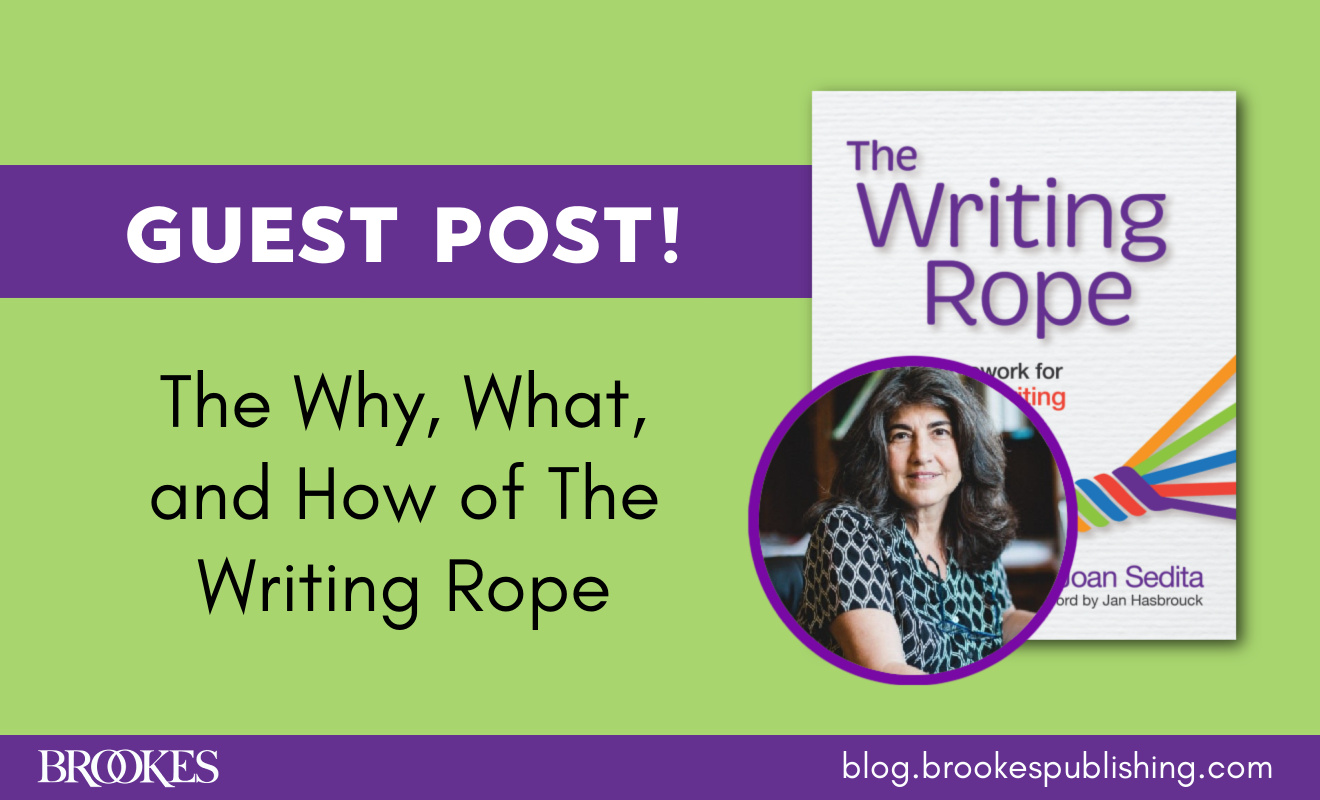
 *Today’s guest post is by Joan Sedita, author of the bestselling guidebook The Writing Rope.
*Today’s guest post is by Joan Sedita, author of the bestselling guidebook The Writing Rope.
Over the past two decades, the literature and discourse related to literacy instruction has focused on reading, even though writing is just as important for student literacy achievement. The focus on evidence-based practices for teaching reading is essential given the high numbers of students not reading on grade level—but the number of students not writing on grade level is equally high, if not higher.
Most educators agree that we need to teach writing. However, many teachers are not sure of “what” needs to be taught and “how” to effectively provide that instruction.
That’s where The Writing Rope comes in.
Developing The Writing Rope: The “Why”
While the research base for writing is not as extensive and developed as reading research, there is a significant body of research to draw from. Unfortunately, most educators are not aware of that research. College teacher preparation programs do not provide enough coursework focused on how to effectively teach writing. And once teachers enter the workforce, professional development for evidence-based writing instruction is scarce.
I have long thought there was a need for a framework to help educators identify the components of writing to inform instruction and curriculum decisions. As I note in The Writing Rope book:
“Much has been written about the multiplicity of skills involved in reading, beginning with the ‘five components’ necessary for skilled, fluent reading that became popular after the 2000 report of the National Reading Panel (i.e., phonemic awareness, phonics, fluency, vocabulary, comprehension). On the other hand, when attention is paid to writing instruction, teachers are not sure what to include. Many educators who are knowledgeable about effective reading instruction are not able to identify the components of skilled writing or essential elements of a curriculum for teaching writing.”
For years, I used a wagon wheel metaphor to help teachers recognize that, like spokes in a wheel, there are many skills and strategies that must be combined for proficient writing. If any spoke is missing, it affects the integrity of the wheel. However, with the renewed interest in Hollis Scarborough’s Reading Rope (2001) in recent years, I decided that a similar metaphor for identifying writing components would resonate better than a wagon wheel. In 2018, I developed The Writing Rope infographic, which illustrates all the strands that are woven into skilled writing:
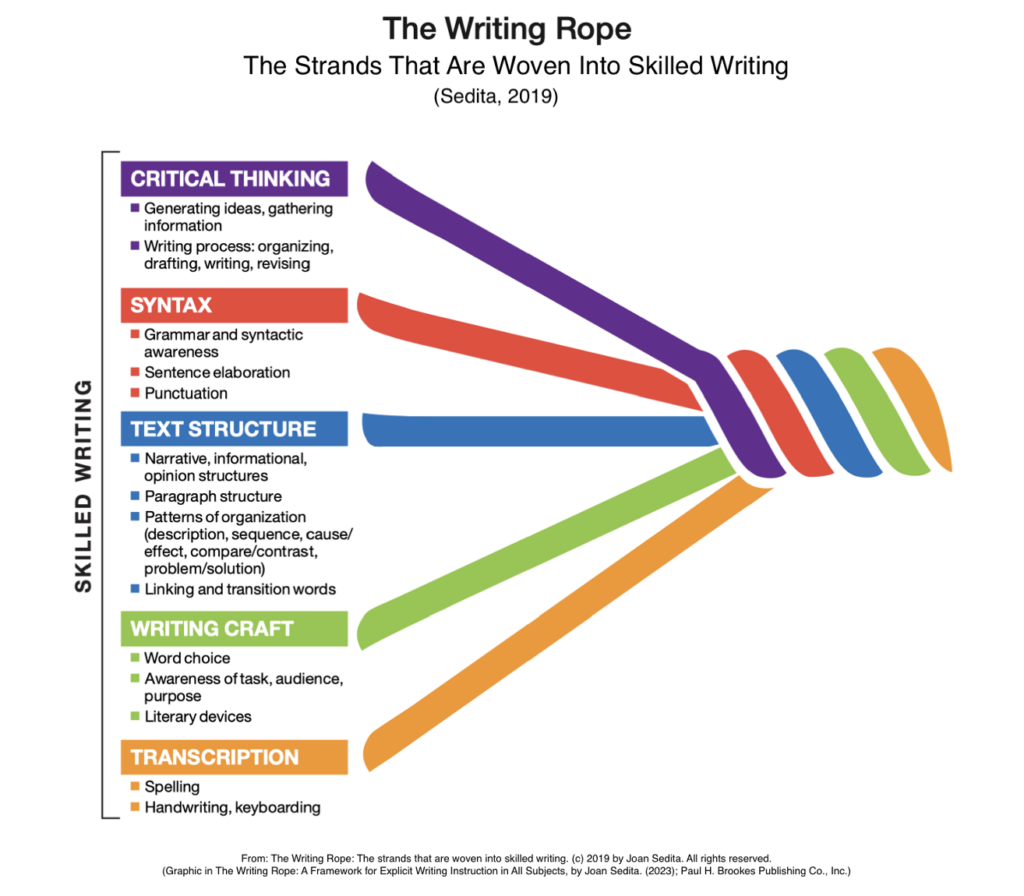 One reason I developed The Writing Rope was to give educators this framework for identifying the skills, strategies, and techniques that require instruction for students to become proficient writers. Similar to reading research, there is not enough bridging of what we learn from research to what and how to teach writing. This is why The Writing Rope includes links to research and offers practical instructional suggestions for teaching writing.
One reason I developed The Writing Rope was to give educators this framework for identifying the skills, strategies, and techniques that require instruction for students to become proficient writers. Similar to reading research, there is not enough bridging of what we learn from research to what and how to teach writing. This is why The Writing Rope includes links to research and offers practical instructional suggestions for teaching writing.
The “What” to Teach
The strands in The Writing Rope organize the many skills, strategies, and techniques that should be taught—in other words, the “what” of writing instruction. The strands are:
Critical Thinking
- Generating ideas, gathering information
- Writing process: organizing, drafting, writing, revising
Syntax
- Grammar and syntactic awareness
- Sentence elaboration
- Punctuation
Text Structure
- Narrative, informational, opinion structures
- Paragraph structure
- Patterns of organization (description, sequence, cause/effect, compare/contrast, problem/solution)
- Linking and transition words
Writing Craft
- Word choice
- Awareness of task, audience, purpose
- Literary devices Transcription
- Spelling
- Handwriting, keyboarding
Writing instruction should address all the strands. Teachers shouldn’t wait for young students to be able to spell and write sentences before they teach paragraph structure and the differences between composing opinion, informational, and narrative text. Except for transcription skills, all the skills and strategies identified in The Writing Rope strands need to be revisited and taught in all grades. As students move through the grades, they need to write increasingly complex sentences, learn more advanced strategies for following the stages of the writing process, and learn advanced application of skills for text structure, writing craft, and critical thinking.
The “How” to Teach
The Writing Rope includes Connect to the Classroom reflections and instructional resources that teachers can use to teach writing to their students. In addition to specific instructional suggestions, I identify seven teaching principles that should be incorporated when assigning writing tasks and teaching writing:
- Gradual release of responsibility when teaching a skill, using an I do it, we do it, you do it approach
- Explicit instruction of writing strategies, using a think-aloud approach
- Differentiated instruction to meet individual student needs
- Scaffolding to support learning of new skills
- Opportunities for collaboration with peers
- Use of mentor text as models for writing
- Increasing the amount students write in all subject areas
I envision teachers using The Writing Rope framework to assess if the writing instruction they are providing is complete—that is, are they teaching skills, strategies, and techniques that are associated with all strands in the rope? Administrators can use The Writing Rope framework to develop a writing curriculum and make decisions about potential writing instruction programs they might purchase.
***
For a complete guide to The Writing Rope, add Joan Sedita’s instant bestseller to your professional library. And be sure to explore her Keys to Literacy Free Resources website, which has an extensive collection of videos, archived webinars, articles, and templates/printables that can be accessed for free.

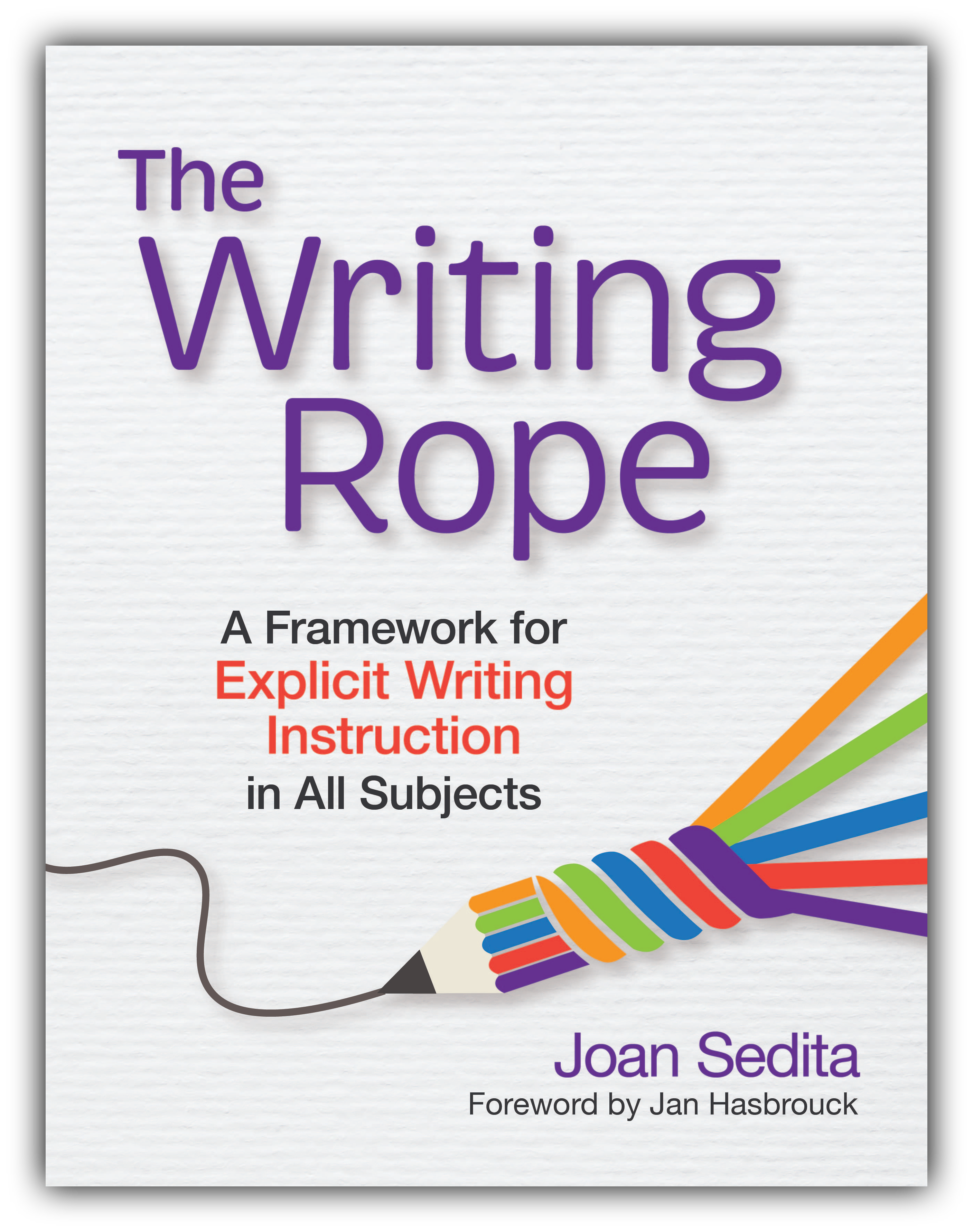
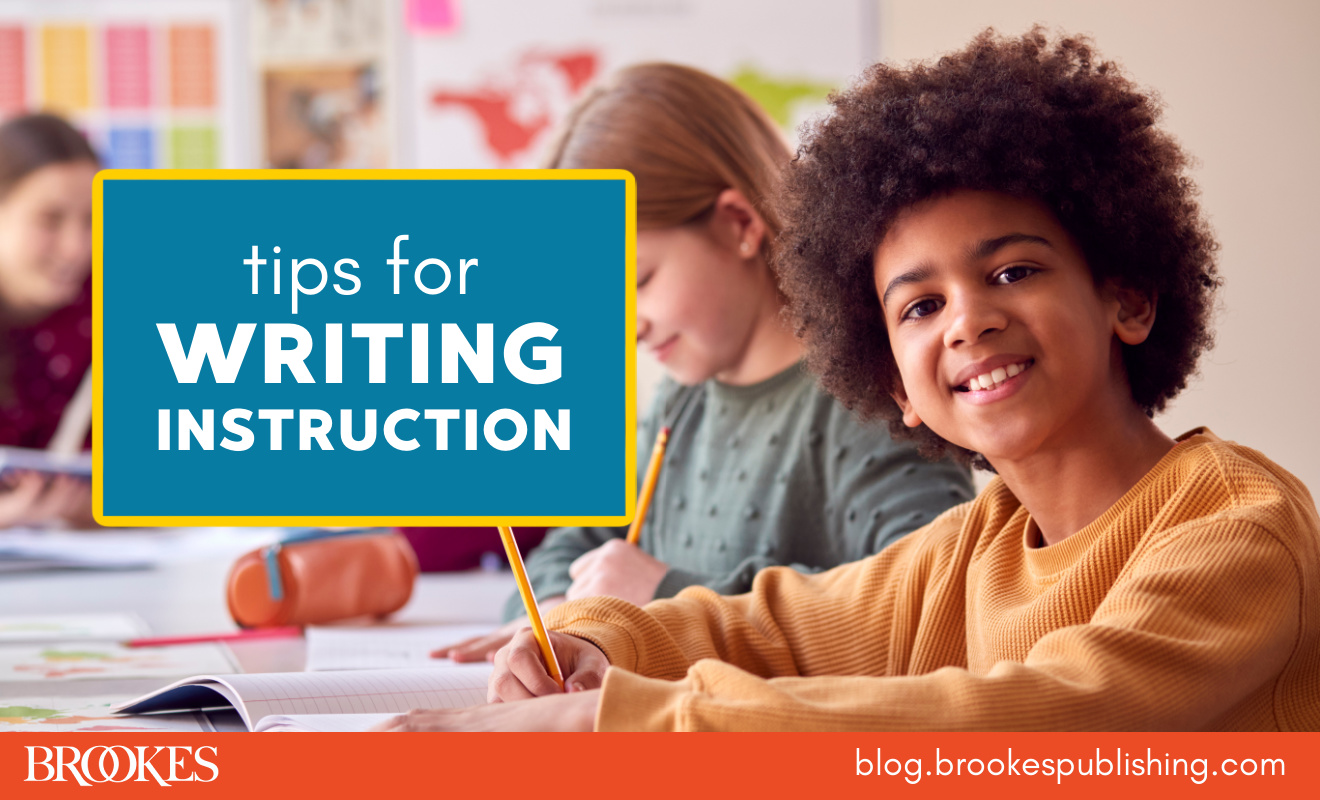
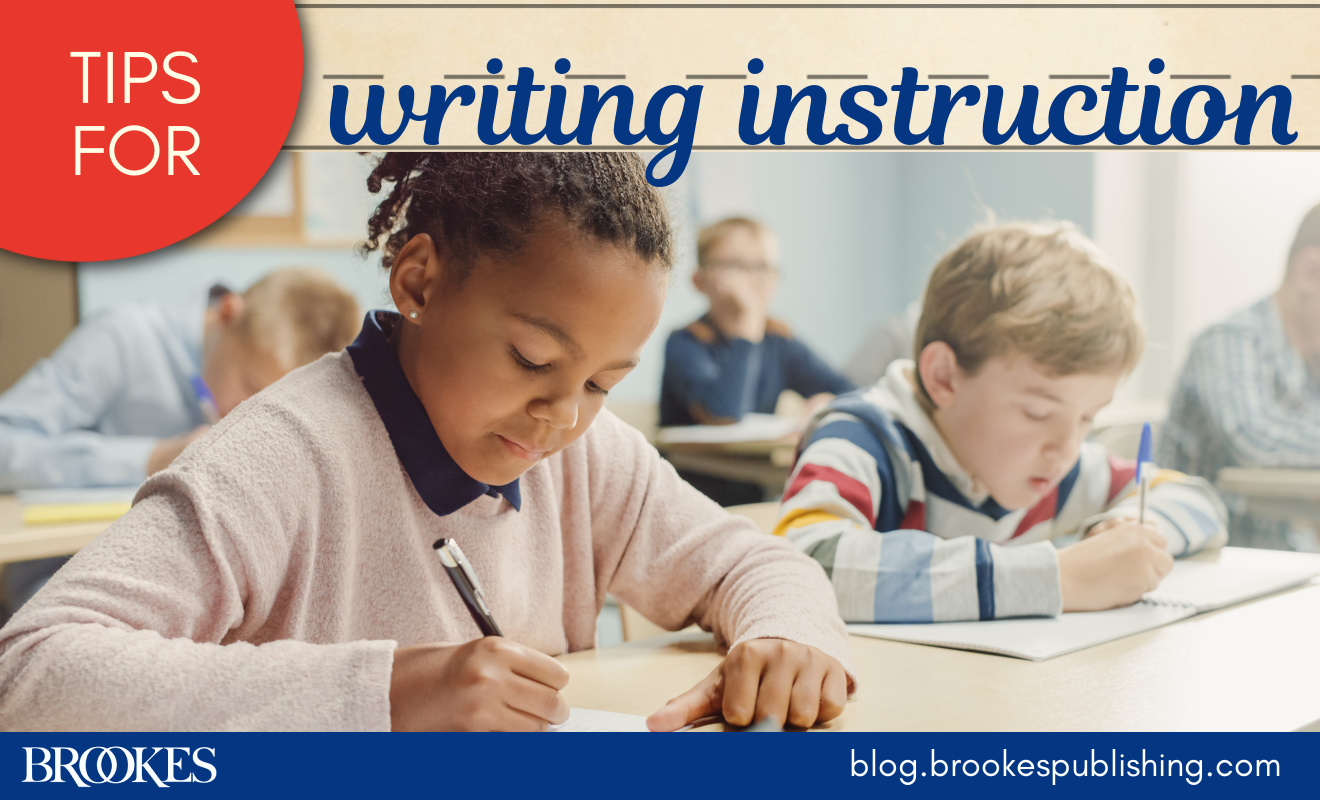
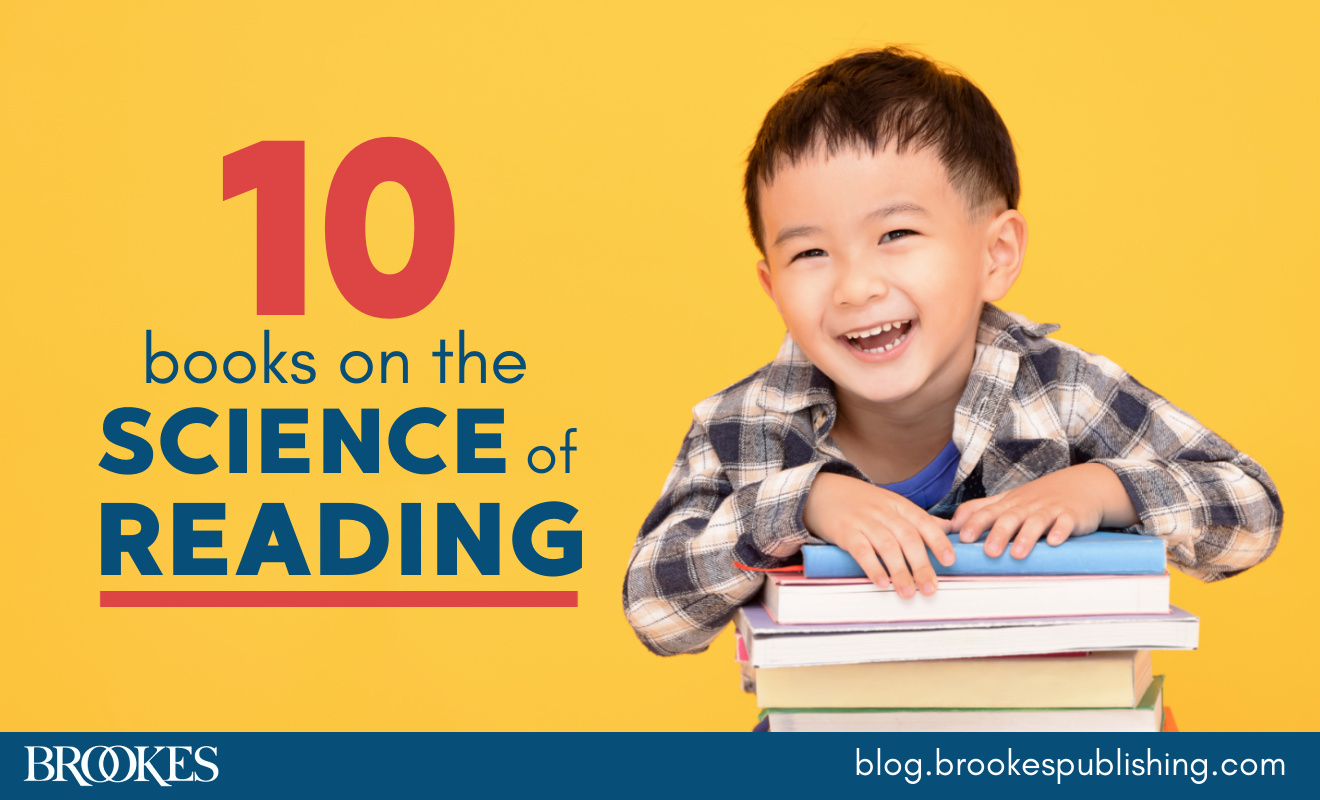
Write a Comment
Your email address will not be published. Required fields are marked *
Post a Comment